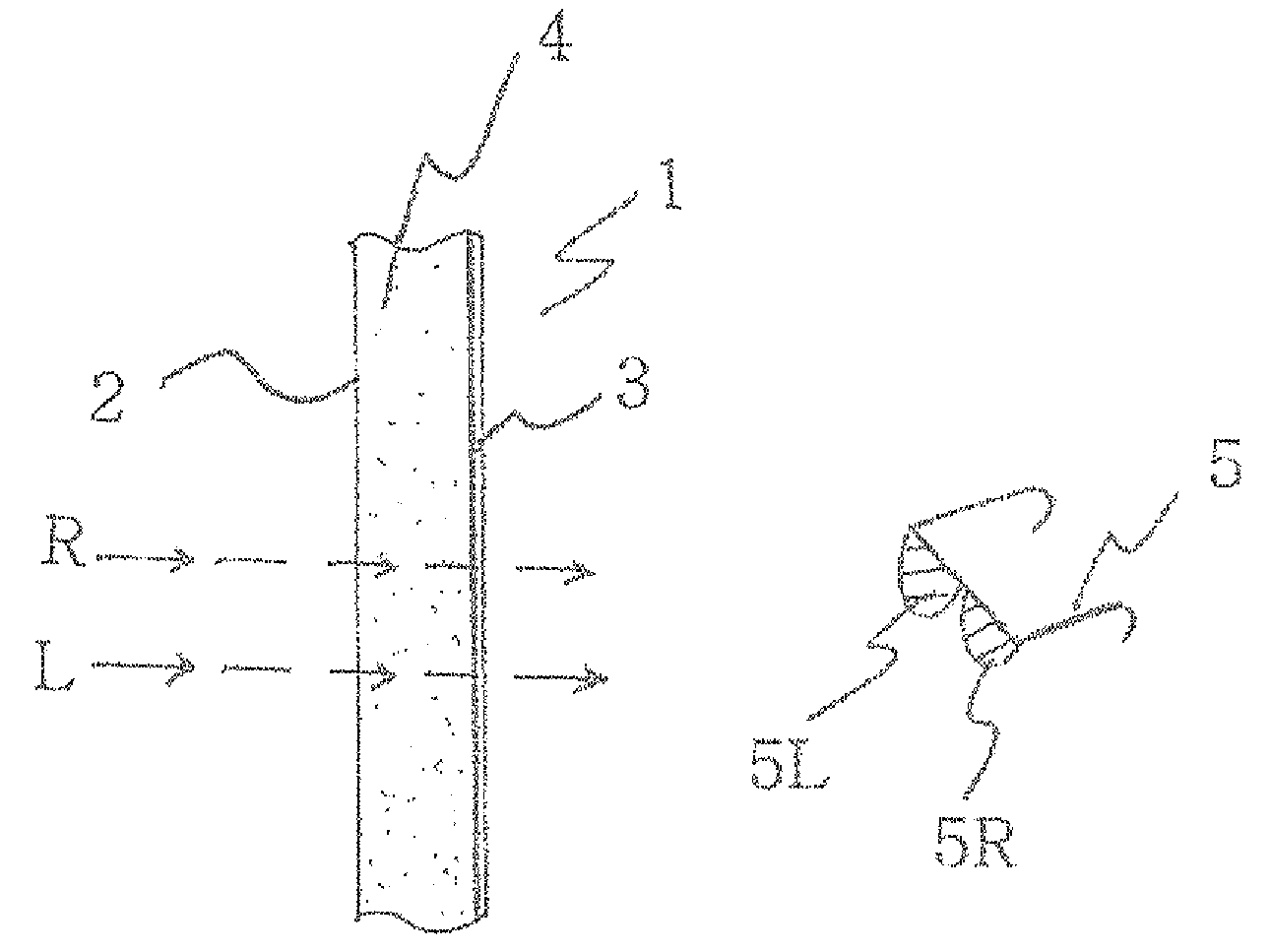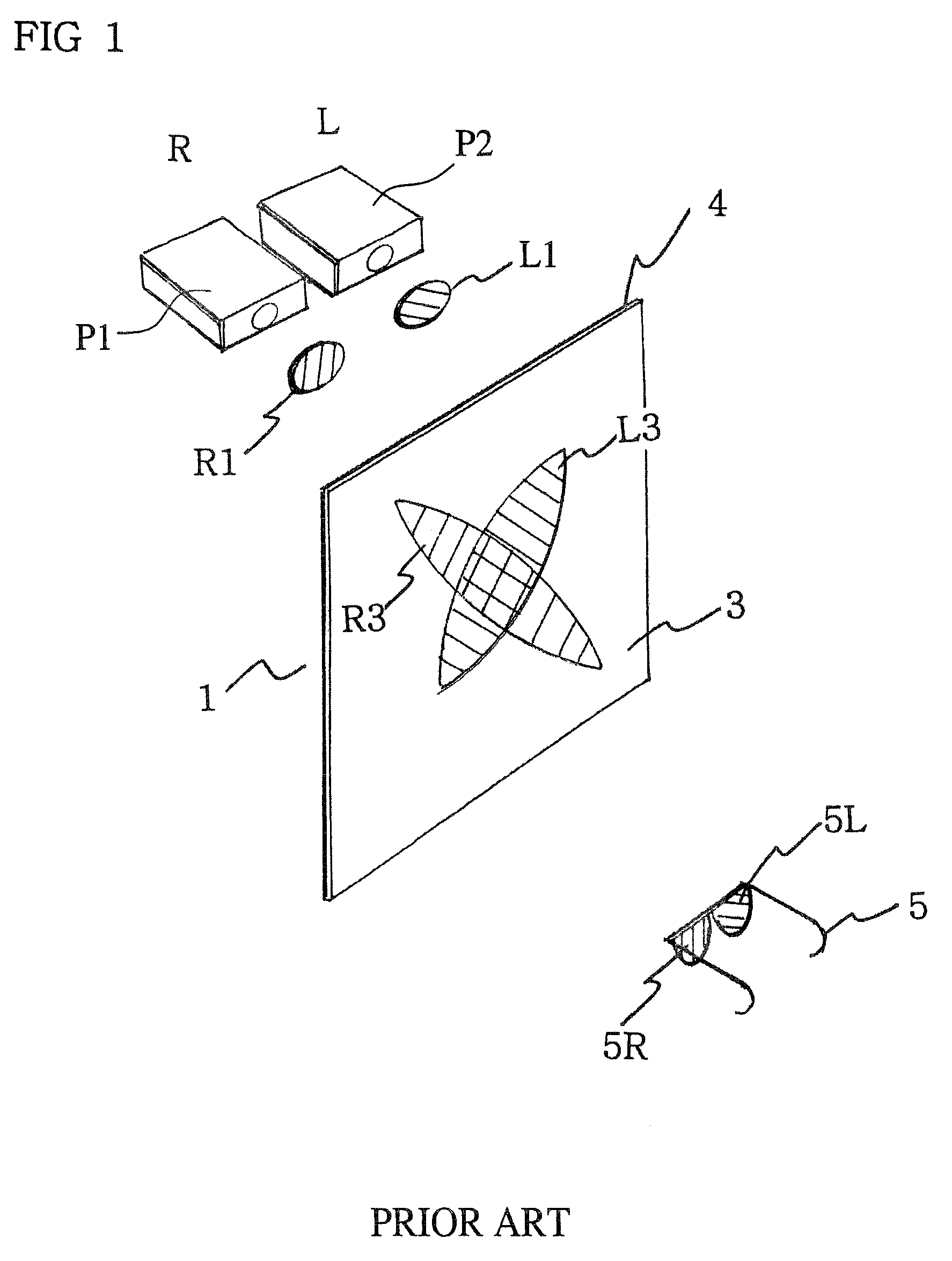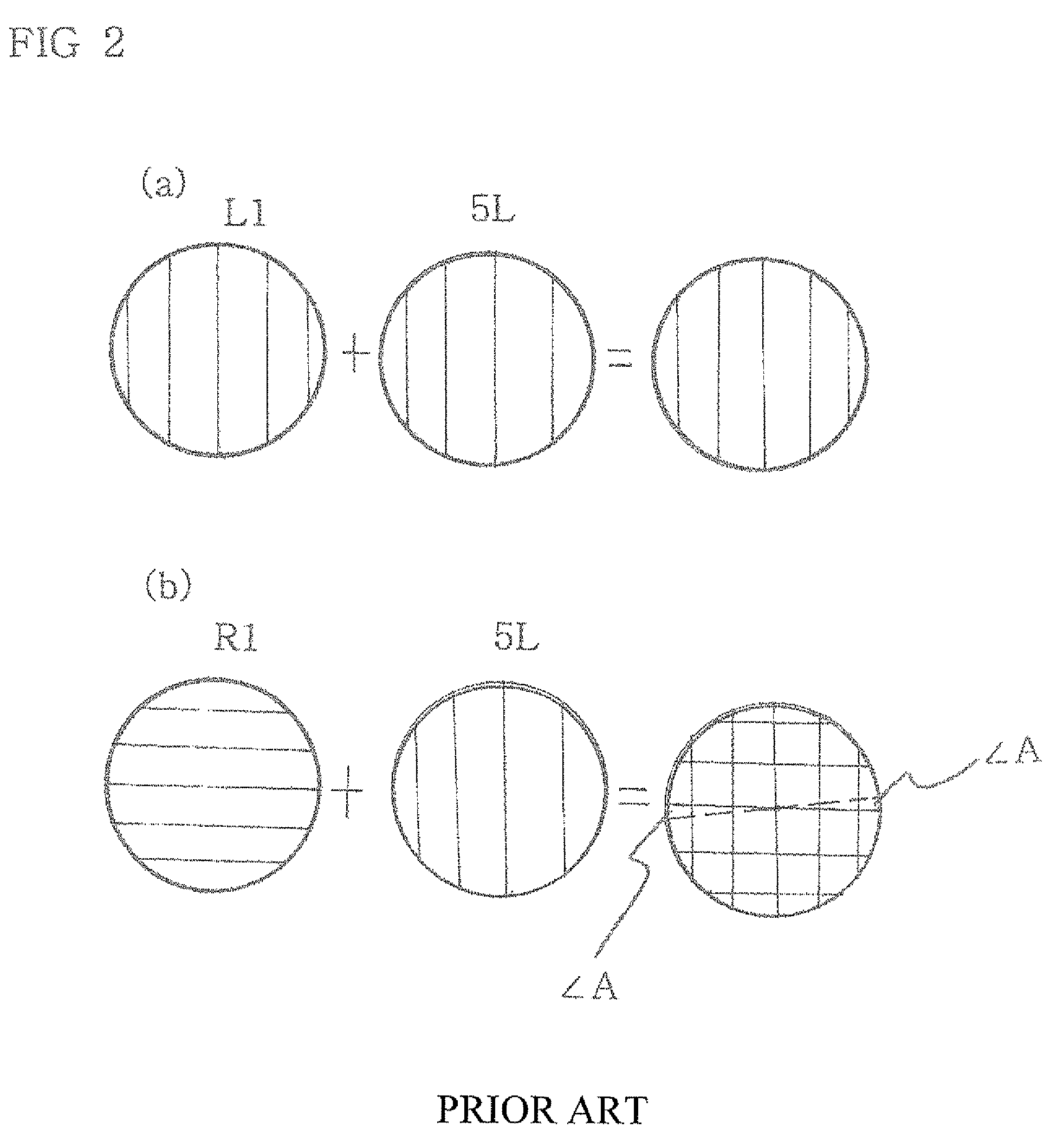Transmission screen for stereoscopic images
a stereoscopic image and transmission screen technology, applied in the field of transmission screen, can solve the problems of less than 20% transmission efficiency, unfavorable three-dimensional viewing, and inability to implement stereoscopic images, and achieve the effect of increasing brightness and clarity
- Summary
- Abstract
- Description
- Claims
- Application Information
AI Technical Summary
Benefits of technology
Problems solved by technology
Method used
Image
Examples
first embodiment
[0058]FIG. 3 is a cross-sectional view of components of an embodiment of the present invention.
[0059]FIG. 4(a) is a view describing the effect of FIG. 3.
[0060]FIG. 4(b) is a view describing a state in which left and right images are imaged (displayed) on a screen.
[0061]The screen substrate of FIG. 3 according to the present invention has a refractive index s of 1.49.
[0062]The transmissivity p of the material is 90% to 95% by itself, but may be 85% when pigment having the color of smoke (i.e., blue or black) on the order of 1-4% is included, so that the entire color of the screen substrate become the color of smoke, thereby making a color transmitted from the rear surface more clear with respect to external (ambient) light.
[0063]When the rear surface of the screen substrate becomes dark, the clarity thereof increases with respect to external (ambient) light by two times or more.
[0064]Furthermore, the incident surface 2 of the screen substrate 1 has a gloss surface so that 85% of the ...
second embodiment
[0067]As illustrated in FIG. 5, the present invention can include a polarization plate 6, having symmetric angles with respect to each other in upper and lower directions, on the imaging surface of the screen substrate 1; that is, the front surface of the imaging surface 2, and can define curved vertical lines 7 having the form of half-cylindrical lenses on the front surface thereof.
[0068]In this case, the refractive index s, and transmissivity p of the curved vertical line 7, and surface particle size of the incident surface 2 are identical to those of the screen substrate 1 according to the present invention.
third embodiment
[0069]The present invention may be further characterized in that the transmission layer 4 transmits polarized images without loss and at the same time, general images may be projected more brightly than conventional screens.
[0070]That is, in FIG. 1, when among the left and right projectors p1 and p2, for example, the left projector p1 is selected, and the left polarization filter L1 in front thereof is moved in an upward or downward direction, images are projected onto a screen without the polarization filter and general images will be projected. Therefore, general images can be projected, and, if needed, general images or stereoscopic images may be selectively projected.
[0071]In such case, general images are viewable by viewers with transmissity and resultant light twice that of a conventional screen, thereby making such images twice as clear as compared to a conventional screen.
[0072]Therefore, the screen of the present invention is usable both as a high-definition transmission sc...
PUM
 Login to View More
Login to View More Abstract
Description
Claims
Application Information
 Login to View More
Login to View More - R&D
- Intellectual Property
- Life Sciences
- Materials
- Tech Scout
- Unparalleled Data Quality
- Higher Quality Content
- 60% Fewer Hallucinations
Browse by: Latest US Patents, China's latest patents, Technical Efficacy Thesaurus, Application Domain, Technology Topic, Popular Technical Reports.
© 2025 PatSnap. All rights reserved.Legal|Privacy policy|Modern Slavery Act Transparency Statement|Sitemap|About US| Contact US: help@patsnap.com



